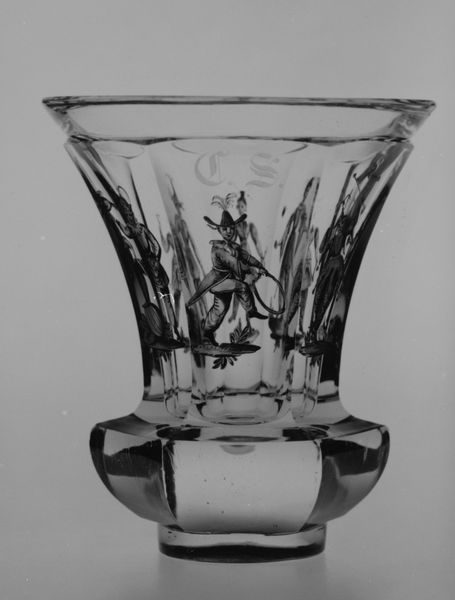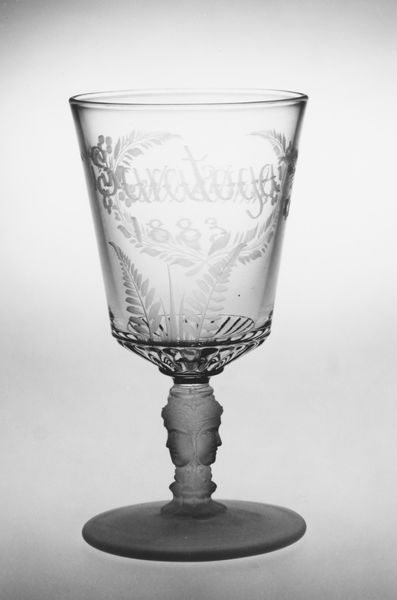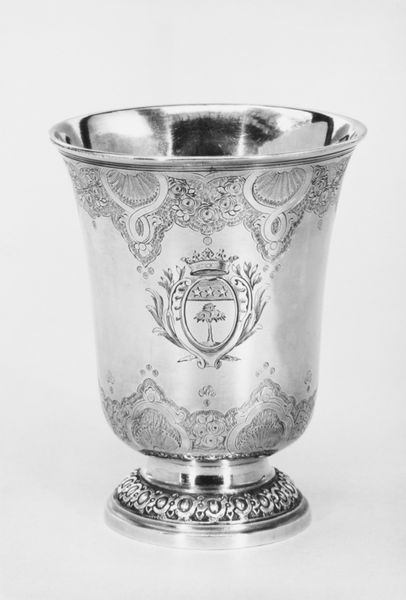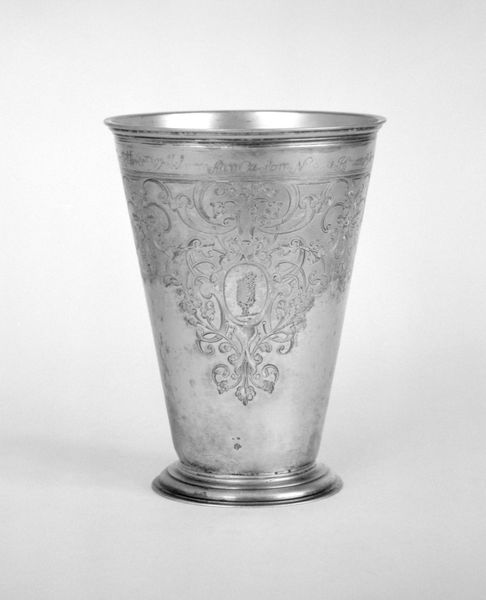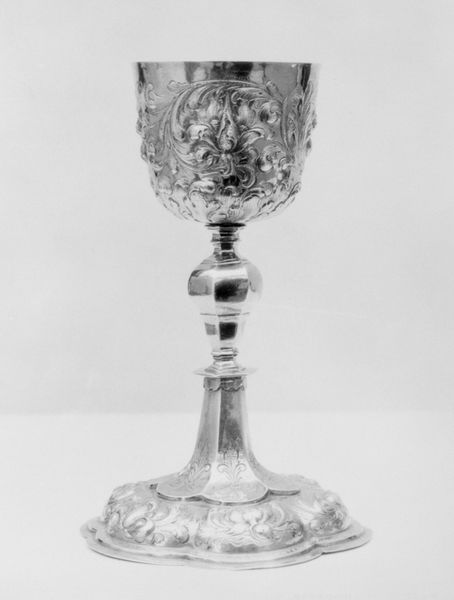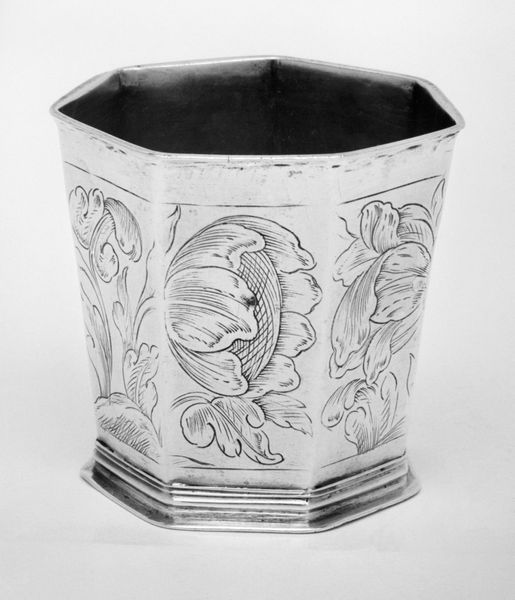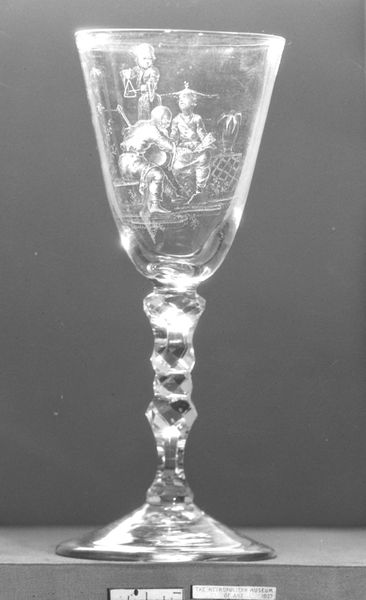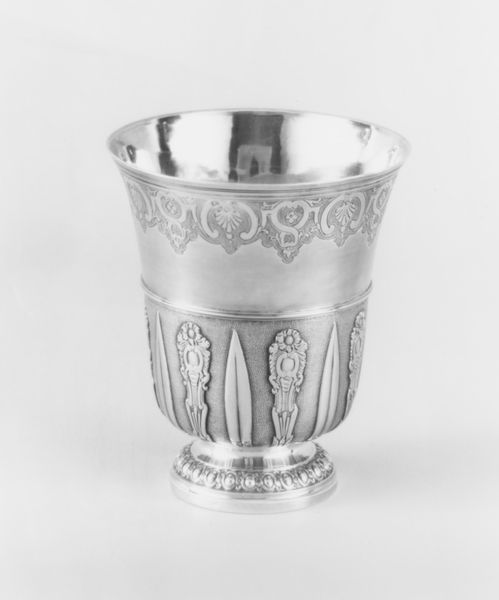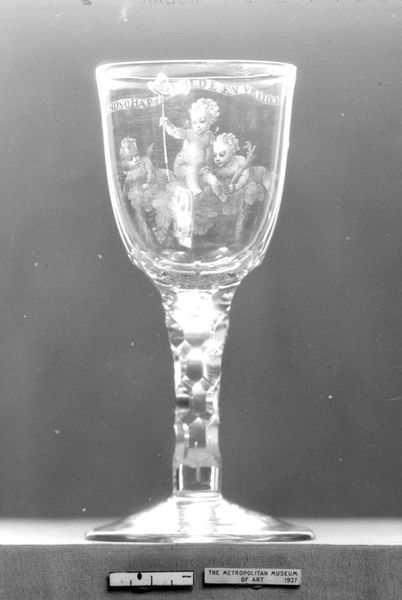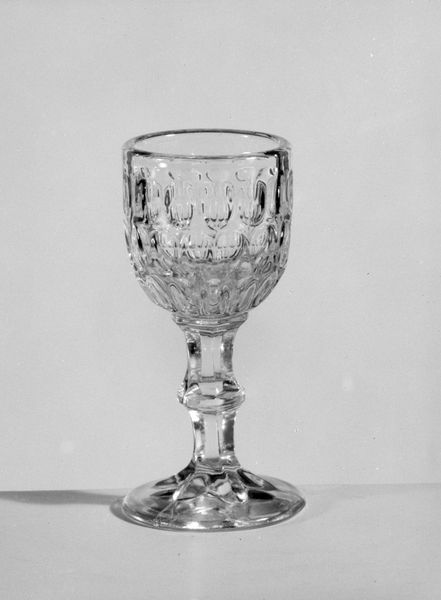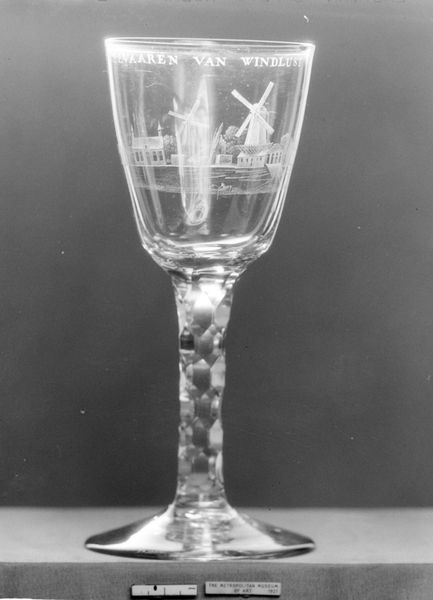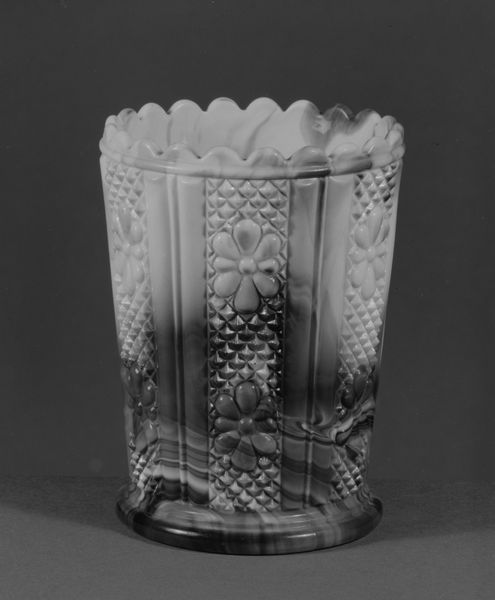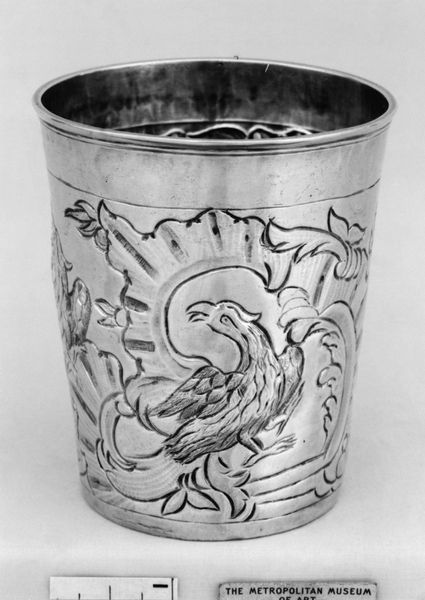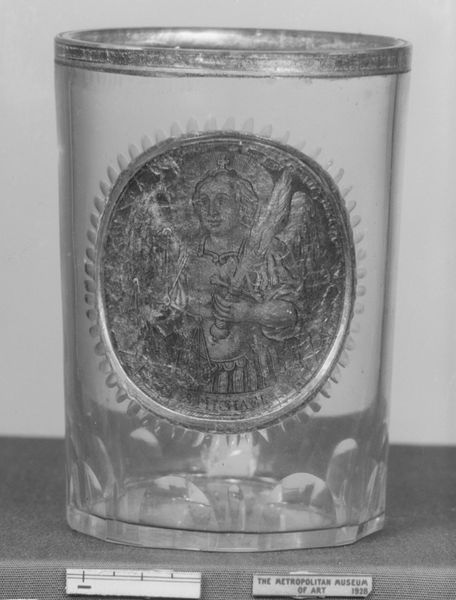
glass, sculpture
#
baroque
#
glass
#
sculpture
#
decorative-art
Dimensions: Height: 3 3/8 in. (8.6 cm)
Copyright: Public Domain
Curator: Welcome to the Metropolitan Museum of Art. Here we are in front of an exceptional example of Baroque decorative art, a glass beaker crafted by Johann Ludwig Faber sometime between 1595 and 1675. Editor: Ooh, that's… stately, isn't it? The whole scene looks like it was pulled from a dream—monochromatic, hazy, a bit unsettling maybe? Like a relic from some aristocratic ritual. Curator: It's certainly a complex piece. What seems like a dreamscape to you also tells a rich story of status, labor and symbolism of its time. Let's unpack that for a moment. Editor: Hit me. I am feeling some pretty strange vibes from it! Curator: Faber created it from glass and it has an ornamental rim. Its monochromatic look and tone comes from Schwarzlot enamel. If we dive a bit deeper, you can see landscapes around a central coat-of-arms or symbol. The vessel and symbols probably speak to the artisan’s profession or lineage. I bet if we dug around, we could maybe trace it to certain artisan classes, families, perhaps a local workshop hierarchy of sorts. Editor: That's really impressive detail, and kind of spooky! The landscapes, too—so precise, so controlled! And those feet, like animal paws… do you think that’s intentional? This thing is sitting on a base. Maybe its creator was interested in grounding such aristocratic rituals into some kind of history of humans' intermingling with our natural world? Curator: It’s tempting to apply modern ecological interpretations. As craft production, though, it reminds us of rigid guild systems of the time— systems deeply intertwined with family legacy, gender roles, access to resources, who even gets to create something as rarefied as a painted glass beaker. Editor: Fair point. It’s heavy, you know? The thing practically radiates status, power. Even though it's small—a cup— it's got that weight, doesn’t it? Curator: It carries the weight of history. A glass from a bygone era, where a privileged class defined itself in relation to everyone outside it. Editor: Well, now when I look at the work I definitely feel a mix of sadness and admiration, with just a pinch of “let’s overthrow the aristocracy,” of course. Curator: And now we have a fuller understanding of how visual languages from the 17th century and their complex meanings echo and resonate today.
Comments
No comments
Be the first to comment and join the conversation on the ultimate creative platform.
